MARKET OVERVIEW
The Global Fatigue Management market is focused on addressing the critical challenge of fatigue management across various sectors. At its core, this market revolves around innovative solutions and technologies designed to enhance safety, productivity, and overall well-being in environments where fatigue poses a significant concern.
In transportation, fatigue management is a paramount consideration. The aviation sector, for instance, relies heavily on efficient fatigue management systems to ensure the safety of both passengers and crew. With the demand for air travel constantly on the rise, the Global Fatigue Management market within the aviation industry is witnessing a surge in the development of cutting-edge solutions. These solutions not only adhere to stringent safety regulations but also optimize operational efficiency, a crucial aspect in an industry where precision and reliability are non-negotiable.
Similarly, the maritime sector is leveraging advanced fatigue management technologies to mitigate the risks associated with human error caused by fatigue among crew members. As industry navigates through global challenges such as climate change and evolving trade patterns, the importance of robust fatigue management becomes increasingly pivotal for the safe and efficient movement of goods across oceans.
Beyond transportation, the healthcare sector recognizes the significance of fatigue management in ensuring the well-being of medical professionals. Long working hours and demanding schedules can adversely affect the performance and decision-making abilities of healthcare professionals. The Global Fatigue Management market in healthcare is witnessing the development of innovative solutions ranging from smart scheduling systems to wearable devices that monitor and analyze fatigue levels, thereby promoting a healthier and more resilient healthcare workforce.
In the energy sector, fatigue management is a critical component of ensuring the safety of workers involved in the extraction, production, and distribution of energy resources. The market is witnessing a paradigm shift towards intelligent monitoring systems that not only track fatigue levels but also integrate predictive analytics to identify potential fatigue-related risks before they escalate.
The Global Fatigue Management market is not confined to specific industries; rather, it permeates through diverse sectors where human performance is pivotal. The advent of advanced technologies such as artificial intelligence and machine learning has further catalyzed innovation within this market. Intelligent algorithms analyze various factors, including sleep patterns, work schedules, and environmental conditions, to provide real-time insights and recommendations for fatigue management.
As industries evolve and global challenges necessitate continuous adaptation, the Global Fatigue Management market remains at the forefront of enhancing human performance, safety, and overall efficiency across various domains. Its impact resonates not only in boardrooms where operational decisions are made but also in the everyday lives of individuals whose well-being is safeguarded by the relentless pursuit of fatigue management solutions.
Global Fatigue Management market is estimated to reach $158.5 Million by 2031; growing at a CAGR of 9.8% from 2024 to 2031.
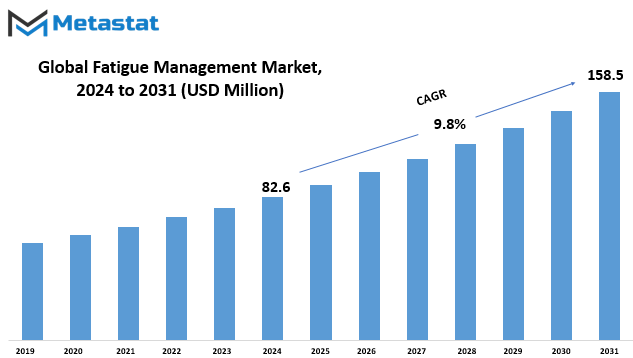
GROWTH FACTORS
In the Global Fatigue Management market, various factors contribute to shaping its trajectory. A pivotal aspect influencing this market is the escalating awareness regarding the profound impact of fatigue on workplace safety and productivity. As industries recognize the correlation between employee well-being and overall operational efficiency, a growing regulatory focus on worker health and safety standards emerges as another significant driver.
However, navigating this terrain is not without its challenges. The implementation of comprehensive fatigue management solutions comes with a hefty price tag, serving as a notable restraint in the market. The financial burden associated with adopting these solutions poses a considerable hurdle for organizations looking to enhance their workforce's well-being. Additionally, the inertia caused by a lack of awareness and resistance to change in workplace culture and practices presents a distinct restraint.
Amidst these challenges, a beacon of opportunity shines through the landscape. The continuous advancements in wearable technology and analytics offer a promising avenue for more effective and real-time fatigue monitoring and management solutions. As these technologies evolve, the market stands to benefit from enhanced tools that provide timely insights into the well-being of employees, paving the way for more proactive fatigue management strategies.
The Global Fatigue Management market, shaped by a delicate interplay of drivers, restraints, and opportunities, reflects the evolving landscape of workplace safety and productivity. As awareness grows and technology advances, the market holds the potential to revolutionize fatigue management, fostering a healthier and more efficient work environment.
MARKET SEGMENTATION
By Types
In today’s dynamic business landscape, the Global Fatigue Management market is gaining substantial attention. This market can be categorized into different types, with a notable focus on Software and Wearable Devices.
The Software segment, evaluated at 52.7 USD Million in 2023, plays a pivotal role in the Fatigue Management market. This technology offers innovative solutions to address the challenges associated with fatigue, proving to be a key player in enhancing overall efficiency and safety in various industries.
On the other hand, Wearable Devices, valued at 23 USD Million in 2023, contribute significantly to fatigue management. These devices provide real-time monitoring and valuable insights into an individual’s fatigue levels, allowing for proactive measures to prevent potential risks in diverse work environments.
As organizations increasingly recognize the importance of fatigue management, the market continues to witness growth in both these segments. The Software and Wearable Devices categories are integral components in the broader spectrum of solutions available, catering to the evolving needs of industries striving for enhanced productivity and employee well being. This shift towards technology-driven fatigue management reflects a broader trend in the modern business landscape, emphasizing the importance of leveraging innovative solutions for optimal operational performance.
By Organization Size
In the Global Fatigue Management market, there exists a segmentation based on the size of organizations. This categorization provides a nuanced understanding of the market dynamics, offering insights into how different entities navigate the realm of fatigue management solutions.
One of the key distinctions lies in the organization size, with two primary categories: Large Enterprises and Small and Medium-sized Enterprises (SMEs). Large Enterprises, a formidable presence in the market, boasted a substantial valuation of 54.6 USD Million in 2023. This figure underscores the significant investment and engagement of sizable corporations in the realm of fatigue management.
On the other side of the spectrum, the Small and Medium-sized Enterprises (SMEs) segment also plays a noteworthy role in shaping the market landscape. With a valuation of 21.1 USD Million in 2023, SMEs demonstrate a pragmatic approach towards addressing fatigue related challenges. This segment reflects the diverse strategies employed by smaller entities to manage and mitigate the impact of fatigue within their operational frameworks.
The differentiation based on organization size adds granularity to the understanding of the Global Fatigue Management market. Large Enterprises, with their considerable resources, contribute to the market’s robustness, while SMEs showcase adaptability and resourcefulness in implementing effective fatigue management measures. This segmentation not only delineates market trends but also sheds light on the varied approaches adopted by enterprises of different sizes in the perpetual quest for efficient fatigue management solutions.
By Application
The Global Fatigue Management market plays a crucial role, catering to diverse applications across various sectors. This market is categorized into different applications, each serving a specific industry need. These applications include Transportation and Logistics, Energy and Utilities, Mining and Resources, Healthcare, Manufacturing, Public Safety and Emergency Services, Construction, and Others.
The Transportation and Logistics sector heavily relies on effective fatigue management to ensure the safety and well-being of drivers, crew members, and other personnel involved in the movement of goods and people. Energy and Utilities also benefit from fatigue management solutions to maintain the operational efficiency of workers engaged in the production and distribution of energy resources.
In the Mining and Resources industry, where demanding physical tasks are commonplace, fatigue management becomes imperative to prevent accidents and enhance productivity. Similarly, the Healthcare sector utilizes fatigue management to optimize the performance of medical professionals, ensuring optimal patient care.
Manufacturing, with its dynamic production environments, benefits from fatigue management strategies to enhance worker productivity and maintain a safe working atmosphere. Public Safety and Emergency Services, dealing with critical situations, require effective fatigue management to uphold the responsiveness and efficiency of emergency responders.
Construction projects, characterized by demanding physical labor and tight schedules, find value in fatigue management practices to safeguard the well-being of workers and maintain project timelines. The Others category encompasses various industries that also integrate fatigue management solutions tailored to their specific needs.
The Global Fatigue Management market’s diverse applications underscore its significance in addressing the unique challenges faced by different sectors. By providing tailored solutions, this market contributes to enhancing safety, productivity, and overall operational efficiency across a wide range of industries.
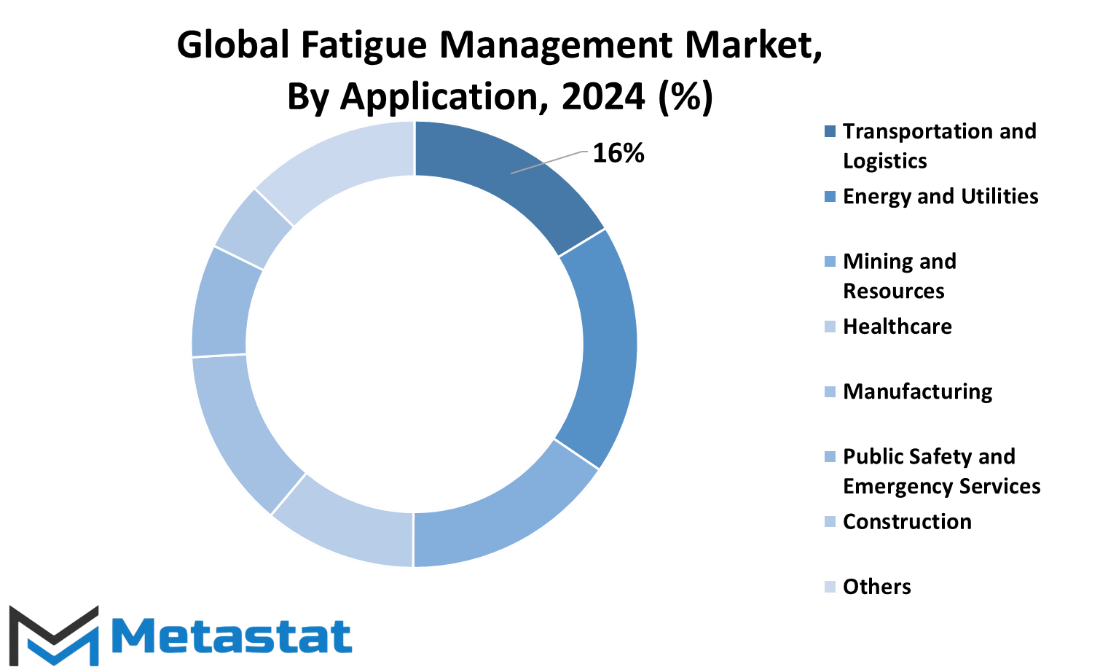
REGIONAL ANALYSIS
In terms of geography, the global Fatigue Management market is segmented into North America, Europe, Asia-Pacific, South America, and the Middle East & Africa. North America is then further subdivided into the U.S., Canada, and Mexico. This geographical analysis allows us to gain insights into how fatigue management practices vary across different regions. Understanding these regional nuances is crucial for developing effective strategies to address fatigue-related challenges in the workplace.
Each geographical segment presents its own set of dynamics and factors influencing fatigue management. In North America, comprising the U.S., Canada, and Mexico, we observe distinctive approaches and considerations in dealing with fatigue issues. Factors such as work culture, regulatory frameworks, and societal norms contribute to shaping the landscape of fatigue management practices in these countries.
Moving beyond North America, the market extends its reach into Europe, Asia-Pacific, South America, and the Middle East & Africa. Each of these regions brings its unique perspectives and challenges to the table. For instance, Europe, with its diverse set of countries, showcases a range of fatigue management strategies influenced by cultural norms and occupational regulations. The Asia Pacific region, on the other hand, introduces a different context shaped by its rapidly evolving industrial landscape and diverse workforce.
As we delve into South America and the Middle East & Africa, we uncover further variations in fatigue management approaches. The cultural and economic diversity within these regions plays a significant role in shaping how organizations address and mitigate fatigue-related risks.
Understanding these regional intricacies is essential for companies operating in the global market, enabling them to tailor fatigue management solutions that resonate with the specific needs of each location.
The regional analysis of the global Fatigue Management market sheds light on the diverse landscape of fatigue management practices across North America, Europe, Asia-Pacific, South America, and the Middle East & Africa. This understanding is paramount for organizations aiming to implement effective fatigue management strategies that are attuned to the unique characteristics of each region.
COMPETITIVE PLAYERS
Among the prominent entities in the Fatigue Management market are Fatigue Science, Optalert, InterDynamics Pty Ltd., Caterpillar Inc., Circadian Technologies Inc., WorkForce Software LLC., Jeppesen (Boeing), Consumer Sleep Solutions LLC (SleepScore Labs), Seeing Machines, NeuroSky, Inc., EyeTracking LLC, and UKG Inc. Each of these organizations brings unique perspectives and solutions to the table, contributing to the overall advancement of fatigue management technologies.
Fatigue Science, for instance, is recognized for its innovative approaches in tackling fatigue-related issues. Meanwhile, Optalert stands out with its solutions that focus on real-time alertness monitoring. InterDynamics Pty Ltd. contributes through its tailored fatigue risk management systems, addressing the specific needs of industries. Caterpillar Inc., a well-known name in various sectors, extends its influence by integrating fatigue management solutions into its extensive range of offerings.
The market also sees the active involvement of Circadian Technologies Inc., a company dedicated to developing solutions based on circadian rhythms. WorkForce Software LLC. adds to the competitive mix with its workforce management solutions, emphasizing the importance of scheduling and planning in fatigue prevention. Jeppesen (Boeing) brings its aviation expertise to the table, ensuring that fatigue management remains a critical aspect of aviation safety.
Consumer Sleep Solutions LLC (SleepScore Labs) places a strong emphasis on consumer-oriented fatigue solutions, while Seeing Machines leverages advanced technologies such as computer vision to monitor and mitigate fatigue risks. NeuroSky, Inc. introduces innovative neurotechnology solutions, and EyeTracking LLC offers fatigue detection through eye movement analysis. UKG Inc. rounds up the list, contributing with its comprehensive workforce management solutions.
These competitive players collectively drive advancements in fatigue management, addressing the ever-growing demand for effective solutions across diverse industries. As they navigate this competitive landscape, the industry witnesses a continuous evolution marked by the commitment of these companies to improving safety and well-being in workplaces where fatigue poses significant challenges. In essence, the collaborative efforts of these key players underscore the pivotal role they play in shaping the future of fatigue management.
Fatigue Management Market Key Segments:
By Types
- Software
- Wearable Devices
By Organization Size
- Large Enterprises
- Small and Medium-sized Enterprises
By Application
- Transportation and Logistics
- Energy and Utilities
- Mining and Resources
- Healthcare
- Manufacturing
- Public Safety and Emergency Services
- Construction
- Others
Key Global Fatigue Management Industry Players
- Fatigue Science
- Optalert
- InterDynamics Pty Ltd.
- Caterpillar Inc.
- Circadian Technologies Inc.
- WorkForce Software LLC.
- Jeppesen (Boeing)
- Consumer Sleep Solutions LLC (SleepScore Labs)
- Seeing Machines
- NeuroSky, Inc.
- EyeTracking LLC
- UKG Inc.
WHAT REPORT PROVIDES
- Full in-depth analysis of the parent Industry
- Important changes in market and its dynamics
- Segmentation details of the market
- Former, on-going, and projected market analysis in terms of volume and value • Assessment of niche industry developments
- Market share analysis
- Key strategies of major players
- Emerging segments and regional growth potential



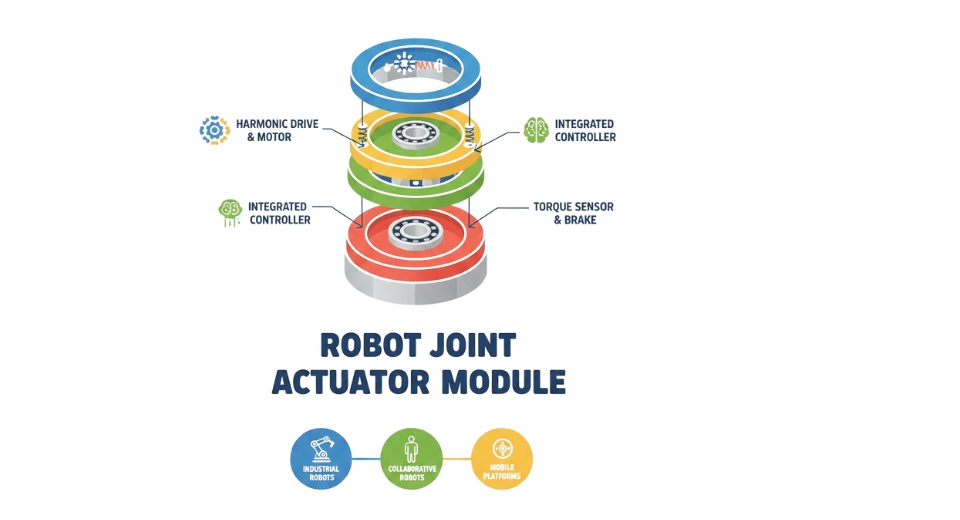
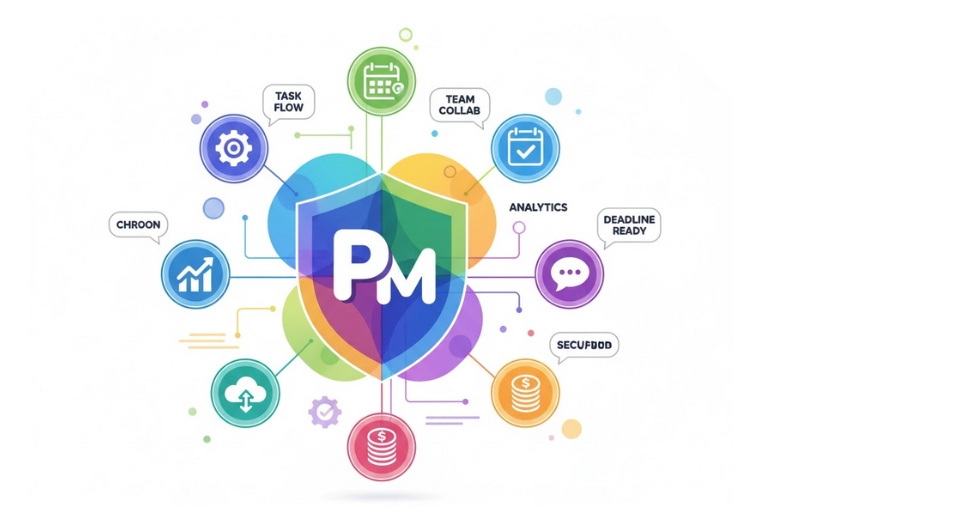
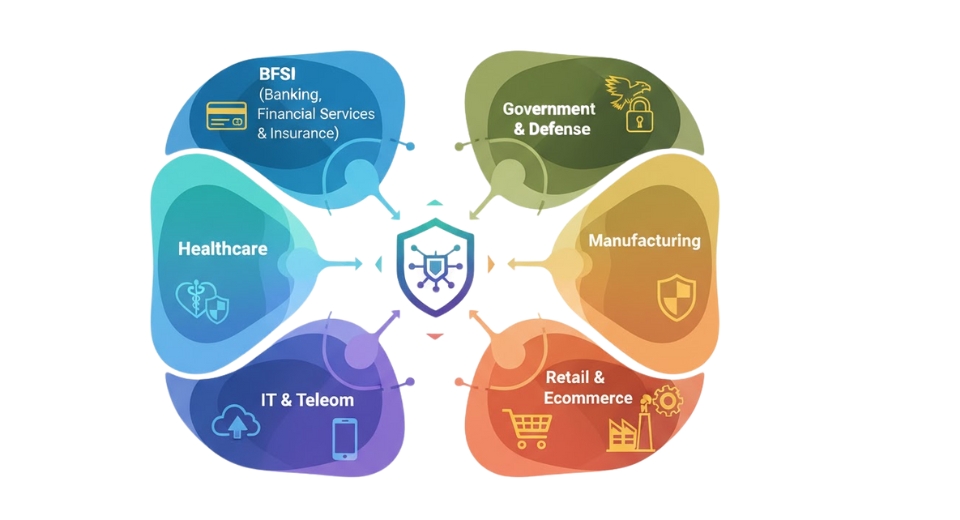
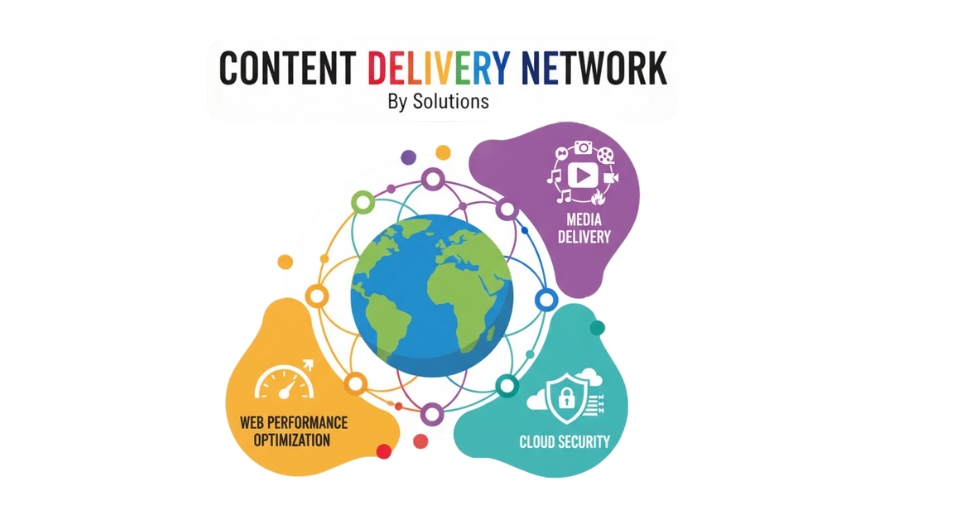

 US: +1 3023308252
US: +1 3023308252






